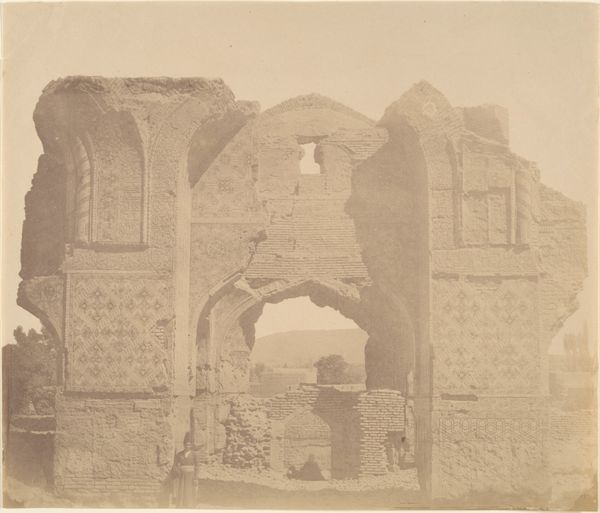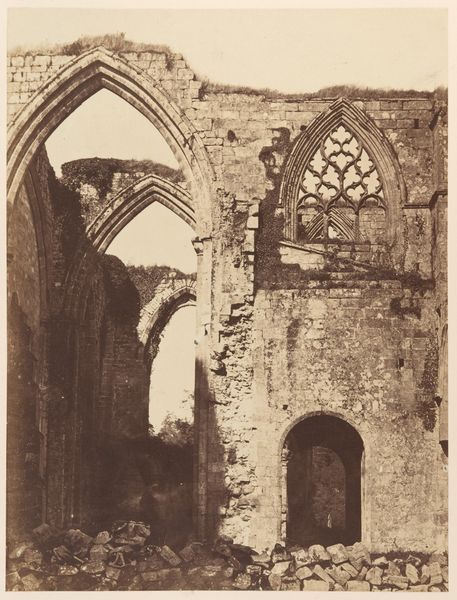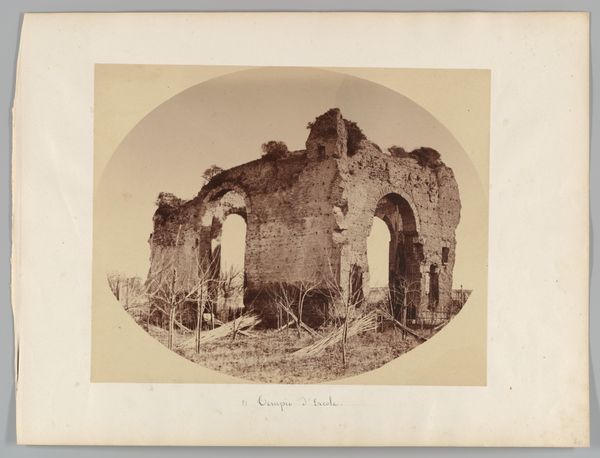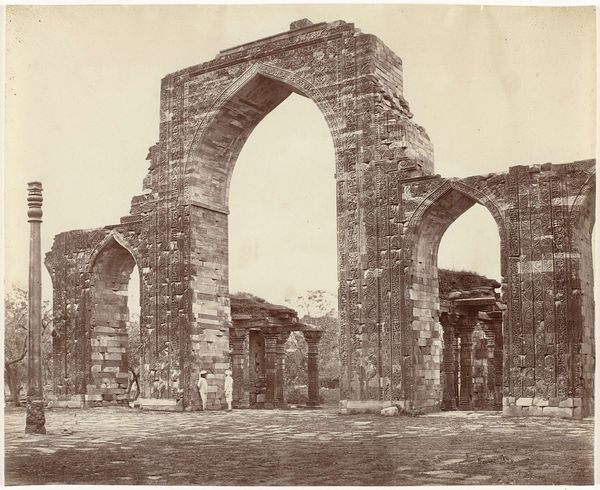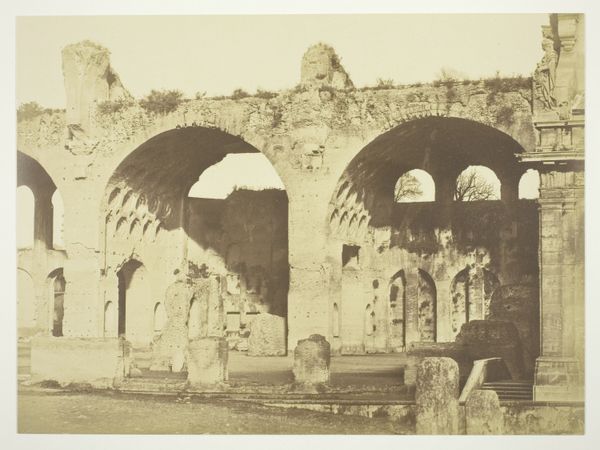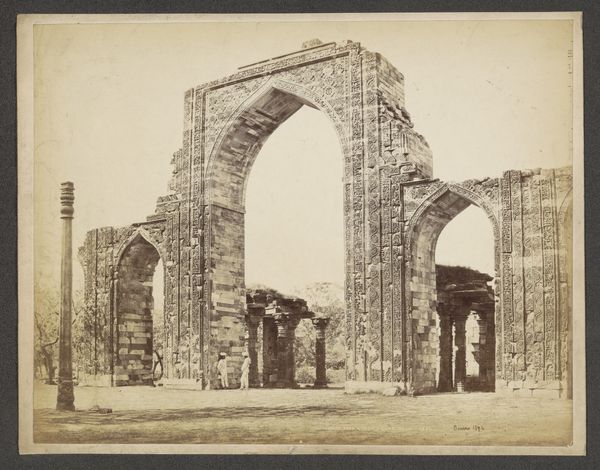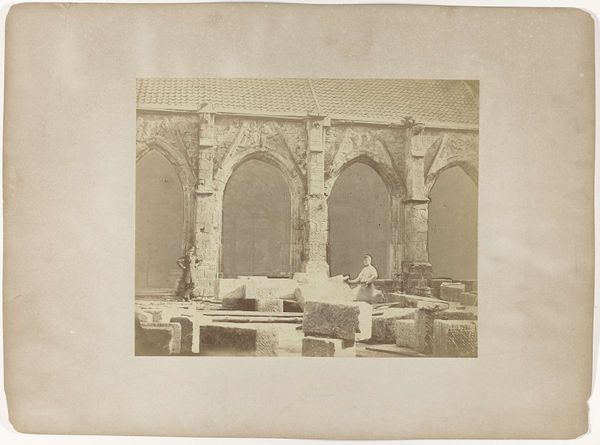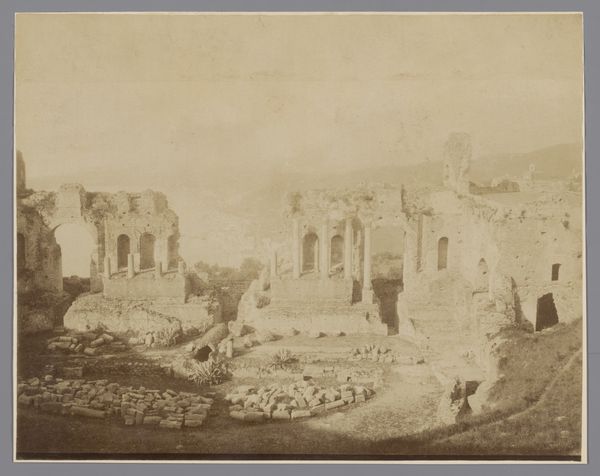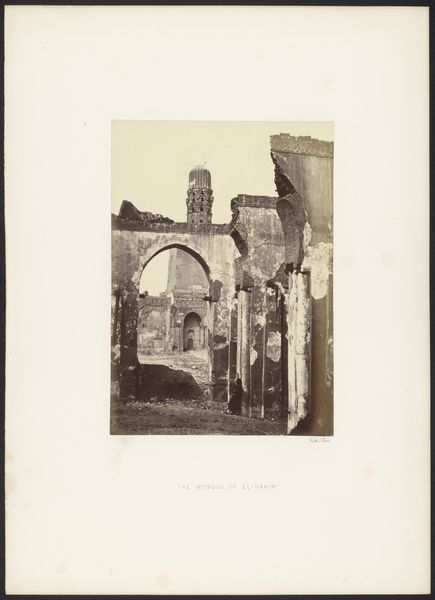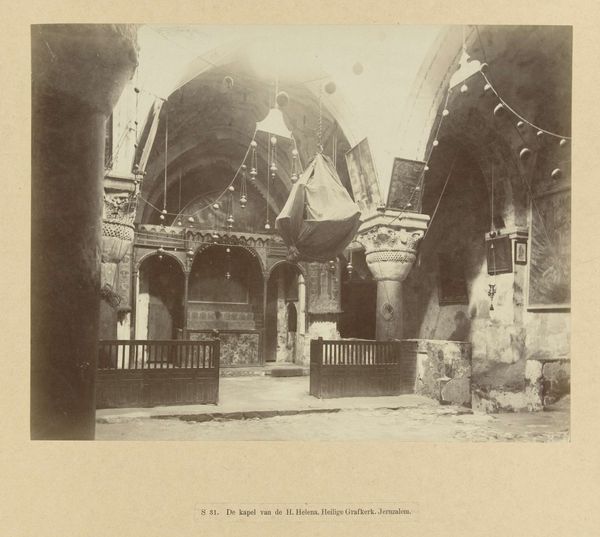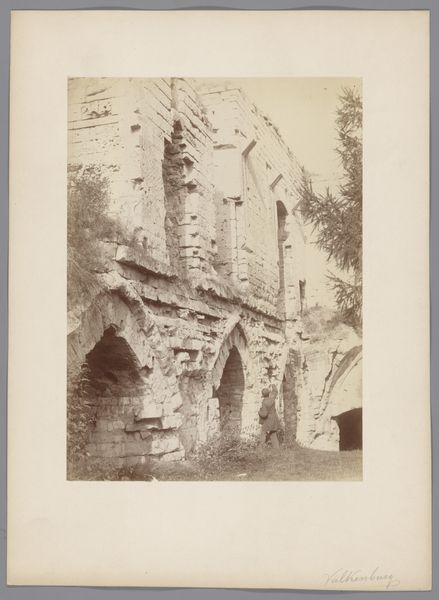
Dimensions: height 69 mm, width 85 mm
Copyright: Rijks Museum: Open Domain
Curator: What strikes me first about this photograph is the light, a muted, sepia-toned wash that gives everything a sense of… bygone-ness. Editor: It's undeniably melancholic, isn't it? As if the image itself is gently decaying, echoing the abbey ruins depicted. This is "Gezicht op de abdij van Furness," a gelatin-silver print captured by Roger Fenton before 1862. Curator: Ah, Fenton! Known for his war photography, but here he’s documenting something ruined by time rather than conflict. Look at the two small figures in the foreground - they amplify the sheer scale of the architecture. Makes me feel utterly insignificant! Editor: Indeed, Fenton's composition deftly contrasts human presence with the immensity of history. Notice how the archways create a series of receding frames, drawing the eye deeper into the heart of the ruins? It is an incredibly powerful and deliberate technique, really placing the building front and center. The lack of clarity adds to the feeling of ruin. Curator: It almost becomes a metaphor, that receding perspective. Each archway a portal to the past. What lingers, what vanishes… Editor: Exactly! Consider the Romanticism of the era. Ruins held enormous symbolic power. They represented the transient nature of earthly things, the inevitable triumph of nature, the echoes of past lives and beliefs. This photograph really captures that perfectly. Curator: Makes you wonder about all those lives that passed within those walls. What they believed in, dreamed of… now it’s just… stone and shadows. So beautiful, though, isn’t it? This photo whispers secrets to those willing to listen, you know. Editor: It does. And Fenton, with his lens, became an interpreter of those whispers, translating them into an image that continues to resonate with the past even now. He really brought the ruin to life.
Comments
No comments
Be the first to comment and join the conversation on the ultimate creative platform.
